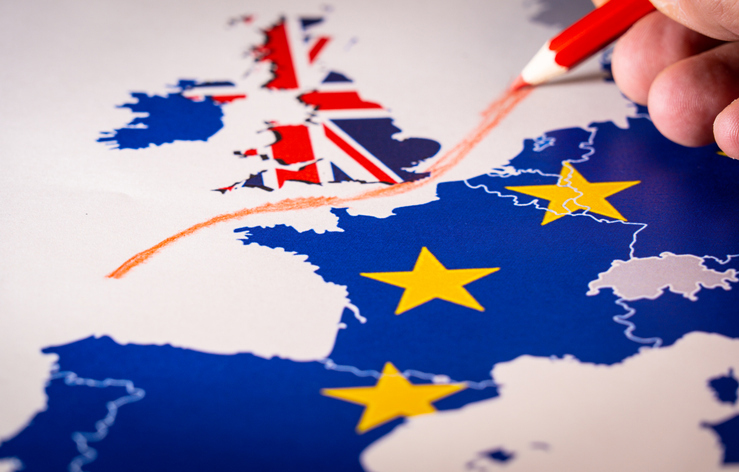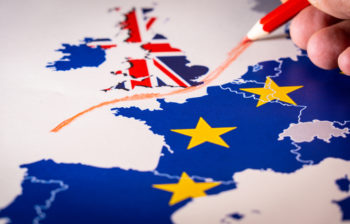Creating a separate UK trading scheme for emissions the worst system of carbon pricing after Brexit


Carbon tax with “citizens’ dividend” one of best ways for UK to reach net zero by 2050
If the UK is to leave the EU Emissions Trading System as part of its withdrawal from the European Union, creating a separate UK emissions trading scheme would be the “worst outcome” of the available options for carbon pricing systems, new research published today by the Grantham Research Institute finds.
In its response to a government consultation on the future of carbon pricing, the Grantham Research Institute, together with the Smith School of Enterprise and Environment at the University of Oxford, have pointed out that, if the UK is to leave the EU Emissions Trading System (ETS) as part of its withdrawal from the European Union, it would prove too costly if UK companies could only trade emissions allowances with each other.
The consultation response instead advocates that the UK government either negotiate an agreement to remain a member of the EU ETS or establish a UK ETS that is linked to the EU ETS, to make sure that UK businesses can continue to trade their emission allowances across Europe, which increases the incentives for businesses to reduce their emissions.
The Institute’s submission also argues that, to better encourage business to invest in low carbon alternatives in the future, any new UK ETS should eventually be opened up further, so that allowances can also be traded with companies in countries such as the USA, Canada or Australia.
An ETS provides a way to put a price on greenhouse gas emissions produced by companies by capping the total amount of the main greenhouse gases that can be emitted by installations covered by the system. Within the cap, businesses buy or are given emission allowances, which they can trade with one another. This creates a competitive market for the penalty they have to pay for producing emissions.
The government has not yet finalised how it will put a price on carbon emissions once the UK has left the EU. Its consultation on the future of carbon pricing closed on 12 July.
An EU-linked ETS or a carbon tax are two options for the government in the event it negotiates a withdrawal agreement with the European Union. If a UK ETS cannot be linked to the EU ETS after Brexit, a carbon tax would need to implemented, the consultation response concludes.
In the event of a “No Deal” Brexit, the government has passed legislation which would replace the EU ETS with a carbon tax of £16 per tonne of carbon-dioxide-equivalent, compared to a price of £28 per tonne currently. This would come in to force on November 4th.
Separate research, also published by the Grantham Research Institute today, finds that a carbon tax of £40 per tonne of carbon-dioxide-equivalent, with all of the revenue being turned into a £1,000 annual payment for all UK households, may be one of the most effective ways of achieving net-zero emissions of greenhouse gases by 2050.
The new research, Global lessons for the UK in carbon taxes, concludes that it may be necessary to replace participation in the EU ETS with a carbon tax but this may not be popular among taxpayers. Some carbon taxes introduced in other countries have been controversial, such as the one introduced by France that helped to trigger the ‘gilets jaunes’ protests.
The paper argues that the government could avoid this unpopularity by giving some of the revenue from a carbon tax back to citizens in an annual lump sum.
In the future, a carbon price, implemented through either an ETS or a carbon tax, should also cover emissions from transport, as well as both domestic and commercial heating, the paper states.
In its recent report, the Committee on Climate Change concluded “in order to incentivise low-carbon investment, carbon prices need to be sufficiently high”, but did not specify how this should be achieved.
Joshua Burke, Policy Fellow at the Grantham Research Institute on Climate Change and the Environment and ESRC Centre for Climate Change Economics and Policy at the London School of Economics and Political Science, said:
“Without long-term thinking about how to make polluters pay for carbon emissions, the UK government will fall short of the all-important net-zero target by 2050.
“It is important that leaving the European Union does not blunt these ambitions. A carbon tax is one way to incentivise the kind of emission reductions needed, but if this is the route the government takes, it must use this opportunity to learn lessons from how other countries have introduced carbon taxes around the world.
“The UK government must properly assess the different options available for pricing carbon once outside the European Union, to make sure that they do not hinder the path to net-zero emissions, considering both a new UK Emission Trading System linked to the EU market and a carbon tax.”
Professor Cameron Hepburn, director of the Smith School of Enterprise and the Environment, at the University of Oxford, which co-authored the consultation response, said:
“This is a global problem – a standalone carbon trading scheme for UK domestic emissions would be a huge missed opportunity.
“New pricing arrangements for carbon emissions should ensure that domestic and international businesses are on a level playing field – importers to the United Kingdom should also pay for the costs of their pollution. A border carbon adjustment is the way to do this, and it would encourage other countries to follow suit in a domino effect. ”
In the UK, carbon emissions are currently taxed through the Carbon Price Support – a tax paid by fossil fuel generators, at £18 per tonne of carbon-dioxide-equivalent – which covers 23 per cent of emissions, and a separate tax known as the Climate Change Levy, paid by energy suppliers. The EU ETS also prices carbon at £28 per tonne of carbon-dioxide-equivalent, for electricity and gas generators and manufacturing industries, such as cement and steel production.
In previous research, the Grantham Research Institute has found that a carbon price consistent with net-zero would start at £50 (with a range of £40–100 across different sectors) per tonne of carbon-dioxide-equivalent in 2020, reaching £160 (£125–300) per tonne in 2050
An EU-linked ETS and a carbon tax are options for the government in the event it negotiates a withdrawal agreement with the European Union. In the event of a “No Deal” Brexit, the government has passed legislation which would replace the EU ETS with a carbon tax of £16 per tonne of carbon-dioxide-equivalent, compared to a price of £28 per tonne currently. This would come in to force on November 4th.
For more information about this media release please contact Kieran Lowe on k.lowe@lse.ac.uk or Bob Ward on +44 (0) 7811 320346 or r.e.ward@lse.ac.uk.
NOTES FOR EDITORS
- The Grantham Research Institute on Climate Change and the Environment (https://www.lse.ac.uk/grantham) was launched at the London School of Economics and Political Science in October 2008. It is funded by The Grantham Foundation for the Protection of the Environment (https://www.granthamfoundation.org/).
- The Smith School of Enterprise and the Environment was established at the University of Oxford in 2008 (https://www.smithschool.ox.ac.uk/). Its mission is to tackle major environmental challenges by bringing enterprise together with world-leading research and teaching, for the benefit of people and the planet.
- A dividend of £1000 per year per households results from a £40 per tonne carbon tax levied on three aspects of household expenditure: domestic energy and housing, transport and food. The revenue raised from this is split equally across each income decile.
-ENDS-

